Three plummets for oil price in 12 years: How should the oil and gas industry define its future?
4400 words| 6mins read
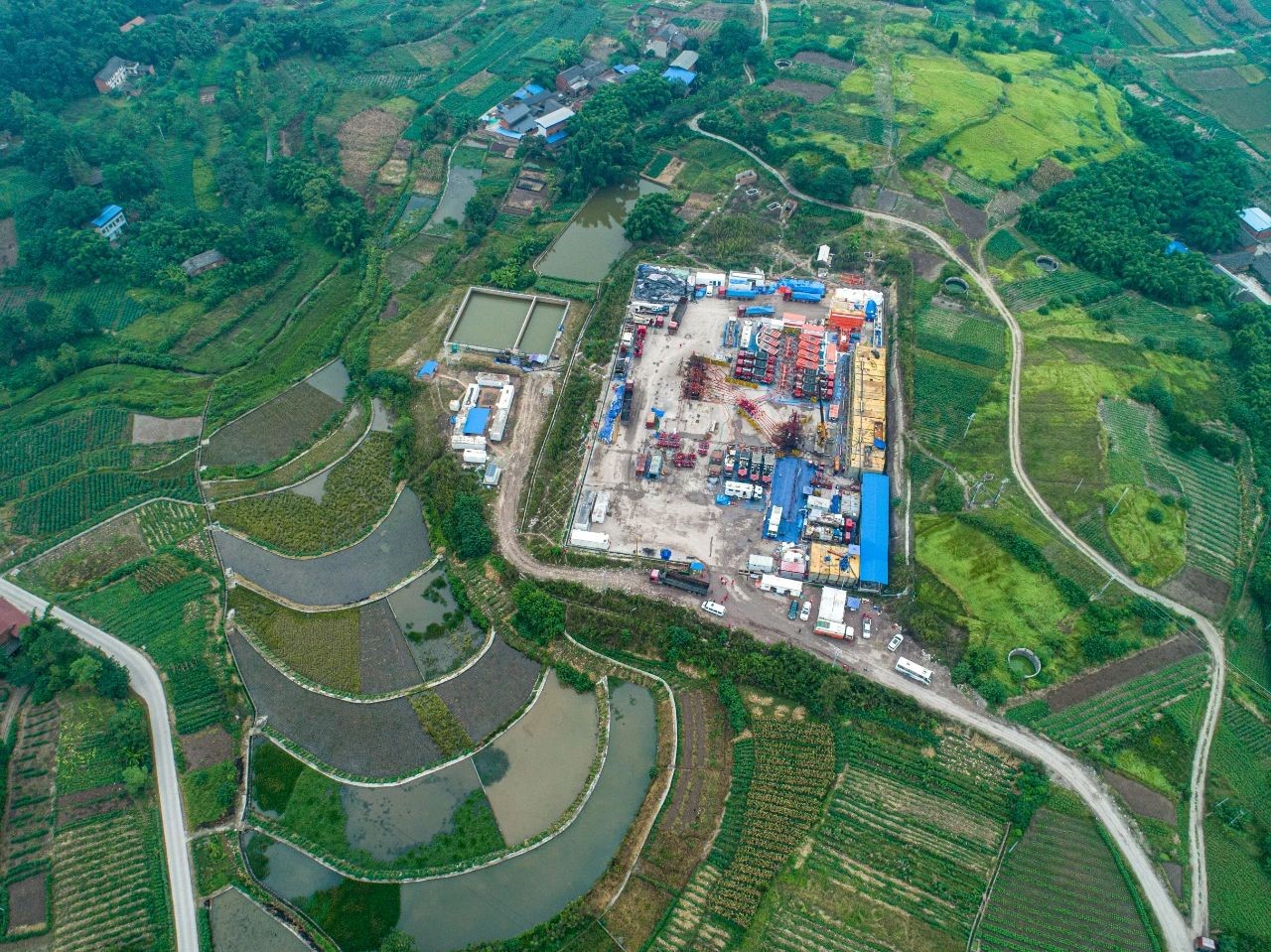
Advanced technology is the one and only lead of the industry’s future
Totally unprepared, the oil price collapsed again in 2020, and this time, it dropped promptly to a history low.
Since the middle of March, the international crude oil price has been below 30 USD/barrel for nearly two months, during which the oil price had even dropped to a negative value.
Last time the oil price dropped below 30 USD/barrel was in 2016, not far from today.
Despite uncertain oil price, a new Rambo has emerged to shine the industry
A Giant Black Swan Arises
In recent years, the international oil price has become increasingly volatile. In the past 12 years, there have been three drastic plunges.
In 2008, the oil price fell from 147 USD/barrel to a minimum of 40 USD/barrel caused by the financial crisis.
In 2014, the oil price fell from 100 USD/barrel to a minimum of about 30 USD/barrel due to the development of shale oil in the United States.
In 2020, the Covid-19 pandemic augmented the pressure of global economic downturn, and oil price dropped from 60 USD/barrel to -37 USD/barrel.
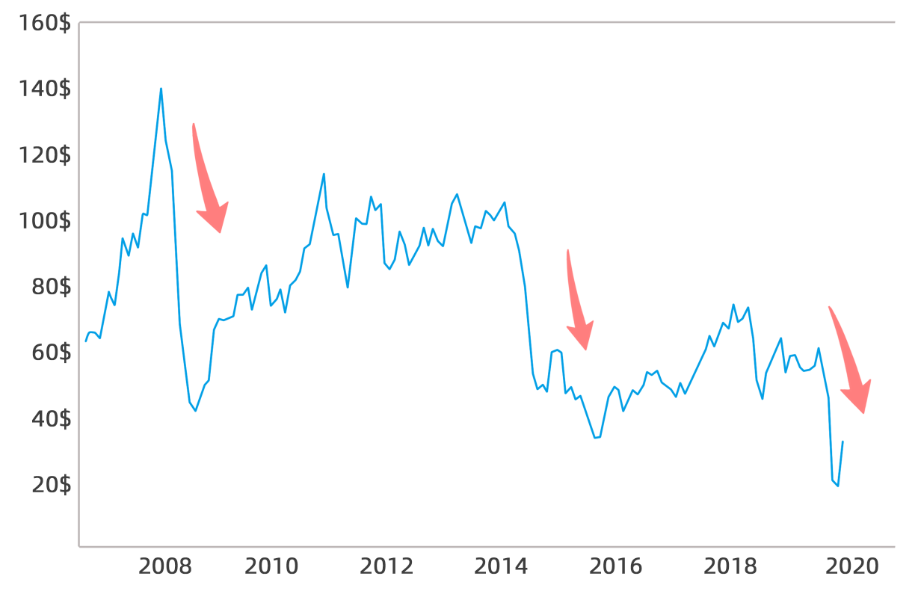
Figure 1: From 2008 to 2020, WTI crude oil price experienced three steep falls.
These oil price plummets have brought impacts to the oil and gas industry, each of which came more intense than its predecessor.
In 2008, the oil price plummet went on for nearly one year; in 2014, it lasted for nearly three years; in the week of May 22, 2020, the number of active oil and gas drilling rigs in the United States fell to 318, while the number was last seen during the Second World War.
How much will the oil and gas industry lose in 2020?
According to a report released by the International Energy Agency (IEA), global demand for crude oil is likely to decrease by 9% in 2020, returning to 2012 level. Meanwhile, demand for natural gas is expected to decrease by 2%.
The decrease of both energy demand and price will lead to the sharp decrease of enterprise income. According to a research by Rystad Energy, an energy consulting company, global oil and gas exploration and production revenue will drop by about one trillion USD in 2020, a 40% year-on-year drop. This means that the income of many oil producers is likely to halve this year.
Looking ahead, it remains unclear when oil prices will recover. In the short term, it is very difficult to restore oil and gas demand before the global pandemic has subsided. Some research institutions predict that, the global oil and gas exploration expenditure may continue to decline even in 2021.
Taken together, the market is full of uncertainties, and the oil and gas industry would find it hard to fully rely on the possible bounce-back of future oil prices.
A Grey Rhino Gets in the Way
For many oil and gas producers, the downturn in oil prices is not the only challenge in front of them.
In order to ensure the national energy security, the China oil and gas industry launched a new round of "oil and gas decisive battle" in 2018, and the oil and gas production is in a critical period of stable production and production increase. At the same time, ever-growing cost is a challenge.
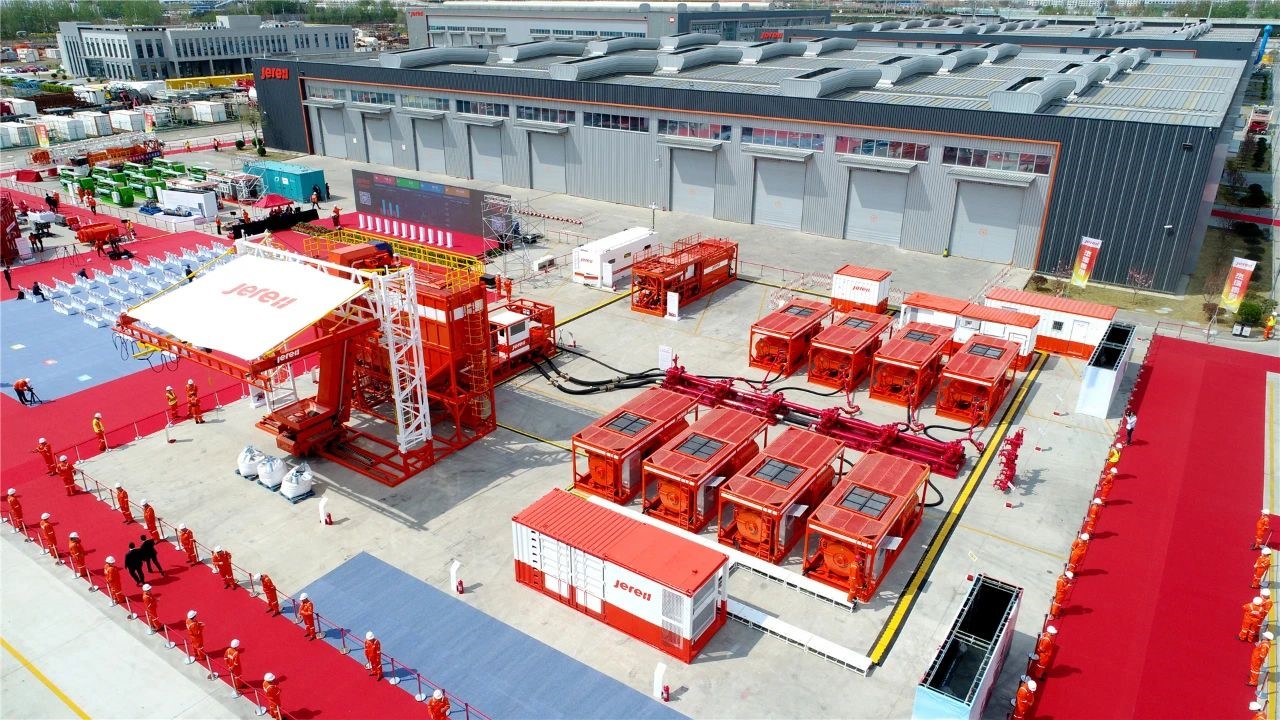
Figure 2: Jereh Group launched electric frac solution that covers complete set of frac spread.
In recent years, hard-to-develop resources such as shale gas, tight oil and other resources account for more and more share of the newly-proved oil and gas resources in China.
According to the data released by China Mineral Resources 2019, in 2018, the proven resource reserves of shale gas in China increased by 8.9% year-on-year, compared with 4.9% year-on-year increase of conventional natural gas and 0.9% year-on-year increase of oil.
In 2019, Qingcheng oilfield, the only one-billion-ton oilfield newly confirmed by China, is also a shale oil field with high difficulty of effective exploitation.
Shale oil and gas production costs are relatively high. Many oil and gas developers in China have tried to take a shortcut, hoping to introduce experience in North America and realize low-cost development of shale gas in China.
The fact is that the conditions of China's shale oil and gas reserves are quite different from those of North America's shale oil and gas, in terms of geological and geomorphic characteristics. So there is not much experience to learn for certain unique problems.
China's main shale gas reservoirs are buried more than 3000 meters deep, whereas many shale gas reservoirs in the United States lay only 1000 meters deep. And most of the shale oil and gas fields in the United States are located in plain areas, while in China most shale oil and gas fields are located in mountainous areas, which makes it difficult to transport and place the equipment, bringing a higher operation cost.
Finally, the current output of shale gas in China is far below the original target. Even if oil and gas prices could rise in the future days, it is likely that many oil producers will not be able to bypass this Grey Rhino named "high cost".
A Hard-Core Equipment is Born
Under the double pressure from Black Swan and Grey Rhino, the oil and gas industry are quietly shifting to a new direction.
Now, the global oil and gas production has paid more attention to efficiency and cost control, instead of blindly expanding production. This is especially evident when it comes to the development of oil and gas technology.
Some new technologies that can improve efficiency is becoming even more popular than ever. For example, the electric frac solution, which is highly praised in the industry, emerges at this historic moment.
In the process of shale gas development, there is a key technology ---- hydraulic fracturing for which a large amount of high-pressure base fluid are injected into the rock strata thousands of meters beneath. This requires complicated operation and equipment, bringing an extremely high cost.
Research statistics have pointed out that the cost of hydraulic fracturing in North America accounts for about 15% - 40% of the total cost of a shale well. If the efficiency of hydraulic fracturing can be improved, the production cost of shale oil and gas can be significantly reduced.
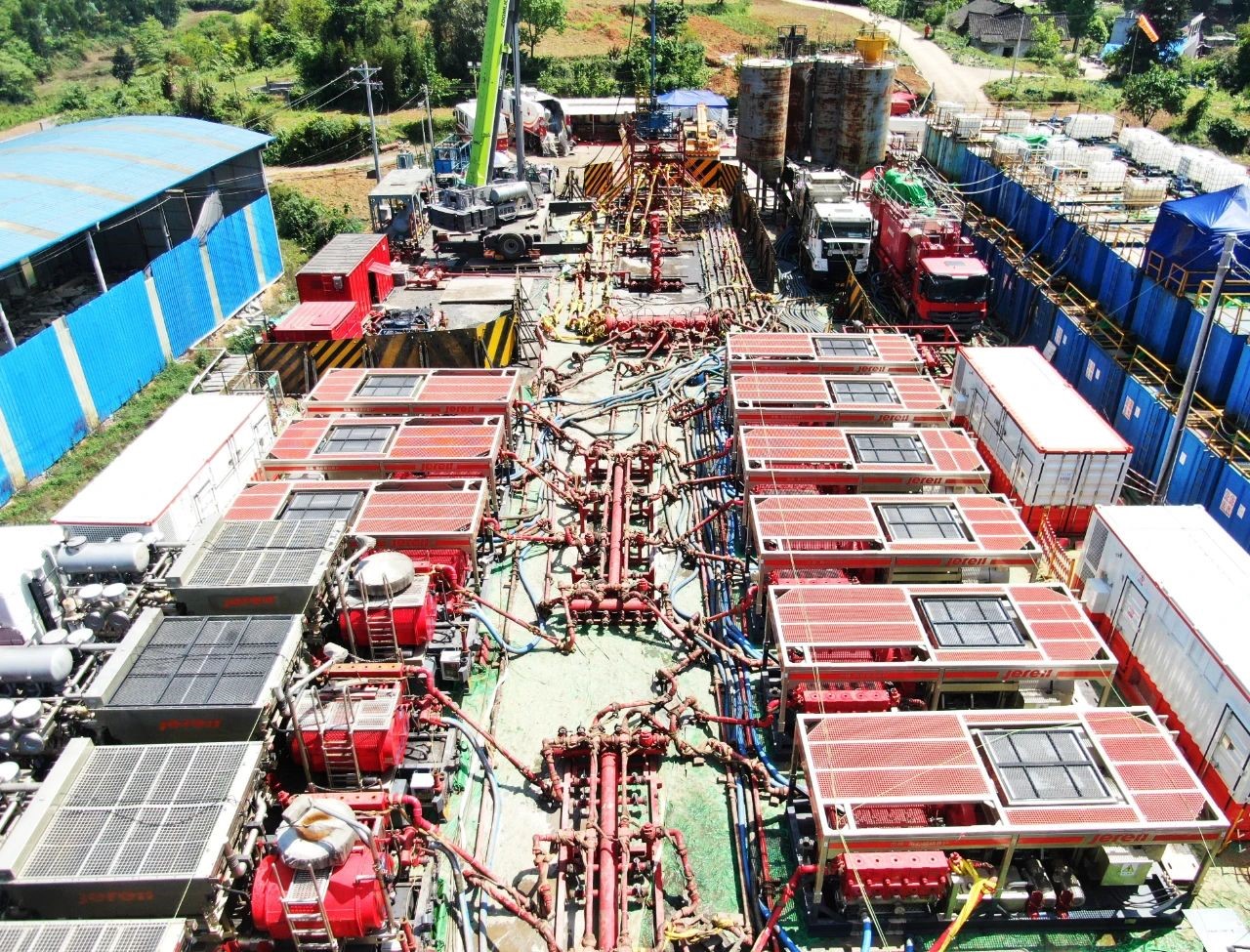
Figure 3: Jereh’s electric frac units on Sichuan operation site.
However, the cost of frac operation is often higher in China, as China's shale oil and gas fields are mostly located in mountainous areas, with narrow mountain roads and limited operation space. It is extremely inconvenient to transport and install frac equipment there, and thus demanding higher stability of the equipment.
From a global perspective, even those international energy giants with strong financial and technology strength fail to provide the right equipment and experience that meet the unique needs of China's shale gas exploration.
To solve this problem, in 2019, Yantai Jereh Oilfield Services Group Co., Ltd. (hereinafter referred to as "Jereh Group") launched the world's first self-developed complete set of electric frac spread for shale gas development, which brought new possibilities for the cost to be further squeezed.
In view of the special difficulties in exploiting shale gas in mountain areas, Jereh Group has made hard-core innovations with regards to two core devices of frac equipment: first, plunger pump is upgraded to cater to continuous operation conditions instead of previous intermittent operation conditions; second, in terms of power, Jereh replaced the traditional diesel drive with electric drive.
In fact, the plunger pump developed by Jereh Group has been used for many years in shale gas frac operation in China. After the plunger pump is improved for continuous operation conditions, its service life and stability are also optimized so as to adapt to more demanding frac operation.
The traditional hydraulic fracturing equipment often needs more than ten diesel engines to drive at the same time, which leads to much limitations in the mountainous area due to enormous space occupation.
Therefore, Jereh Group developed the electric frac equipment with the design concept of high power density. Its power is more than twice that of the conventional diesel drive frac equipment with a power density up to 134kW/t, the largest in the world.
This means that it only takes 9 electric frac units now to accomplish the same amount of work that required 18 sets of diesel-driven fracturing equipment to operate simultaneously in the past. As thus, the operation needs not only less space for operation, but also less purchasing and maintenance costs for the equipment.
It is worth mentioning that Jereh Group's R&D team found that there are many residential areas near the shale gas field in Sichuan. The loud noise from traditional frac equipment severely affects local residents’ daily lives, making it difficult to operate at night and lowering the operation efficiency.
For this reason, Jereh Group adopts the technology of mute fan and frequency conversion control to control the noise under 85 dB, so as to meet the requirements of operation during nighttime.
In addition, the electric equipment is equipped with an intelligent integrated control system. The system can transmit the on-site data to the base data cloud platform in real time through 4G, 5G and satellite, cooperate with built-in intelligent analysis and diagnosis, and provide technical guidance and early warning analysis for well site operation.
In order to minimize the cost of frac operation, Jereh Group made special design for fracturing manifold, sand blender and sand conveying equipment.
For example, the working performance of sand blender is 15% - 20% higher than that of diesel drive equipment of the same specification; sand conveying equipment changed traditional mode of crane hoisting and bag breaking, making the supply of frac sand safer and more efficient.
The introduction of Jereh Group electric frac solution has greatly improved the capacity of domestic shale gas production.
Last year, in the frac operation of Sichuan Wei 202H40 platform, Jereh Group's electric frac solution refreshed the record of shale gas frac efficiency in Sichuan and Chongqing area. In the end, 5 shale gas wells achieved a production leap of 5 million m3 /d.
Since then, Jereh Group's complete set of electric frac equipment "family" have been delivered to major oil and gas fields across the country, providing new support for safe, green, efficient and intelligent exploitation of domestic oil and gas fields.
A deep cultivator of technology innovation
It is worth noting that Jereh Group's complete set of electric frac solution is not an instant inspiration, but a result of years of cultivating.
The R&D and manufacturing process went through 8 years, from plunger pump to ultra-high speed turbine transmission, from turbine frac equipment to the complete set of electric frac equipment.
Jereh Group is one of the earliest companies to provide technology for shale gas development in China, who has participated in the production of well Wei 201-H1, China’s first shale gas horizontal well.
In the early stage, Jereh Group has noticed the problems caused by the large equipment size, loud noise, high frequency of pump inspection and narrow well site layout.
Is there a way to shrink the equipment, lower the noise and raise operation stability? Jereh’s R&D team began to ponder this series of problems.
Upon investigation, they found these problems difficult to solve at that time, as the key lies in a high-efficiency and stable high-power frac pump. In 2011, Jereh Group independently developed and manufactured the truck-mounted plunger pump with the largest HHP in the world (the maximum output power is 5000hp).
After solving the most critical problem of pump, in 2014 Jereh Group further developed the world's first turbine frac unit (Apollo) with the largest single power. Apollo broke through the limitations of traditional frac technology, enabling China to catch up with the United States and Russia by owning the turbine frac unit with the largest single unit power.
But Jereh Group's R&D and innovation did not stop there. In order to further improve the performance of the pump, they disassembled a 5000hp plunger pump which had been operated on site for 5 years. The R&D team checked all the key parts, analyzed those with serious wear and abnormal conditions, even those within the design scope, none of which could get away from the analysis. .
Finally, over 20 optimizations were accomplished including the shell, gear, bearing and other details. The fluid end’s theoretical bearing capacity was increased by 1.1 times.
The pursuit of excellence brings about more compact and flexible 5000hp electric frac equipment even with no alterations to the pump weight and size, which is more suitable for continuous operation with higher load.
At the same time, the research and development of electric frac was also in a prospective preparation. As early as 2011, Jereh Group's R&D personnel have considered to adopt electric drive instead of diesel drive, and made purposeful technical reserves ahead of time. For this reason, Jereh Group built a 5MW-powerd test platform for electric frac equipment.
Owing to continuous upgrading and innovation accumulation during on-site application as well as the unremitting R&D process, Jereh Group successfully launched the complete set of shale gas electric frac equipment and solution after 8 years of determined efforts.
In October 2019, the world's first 7000hp electric frac skid independently developed and manufactured by Jereh Group was successfully offline.
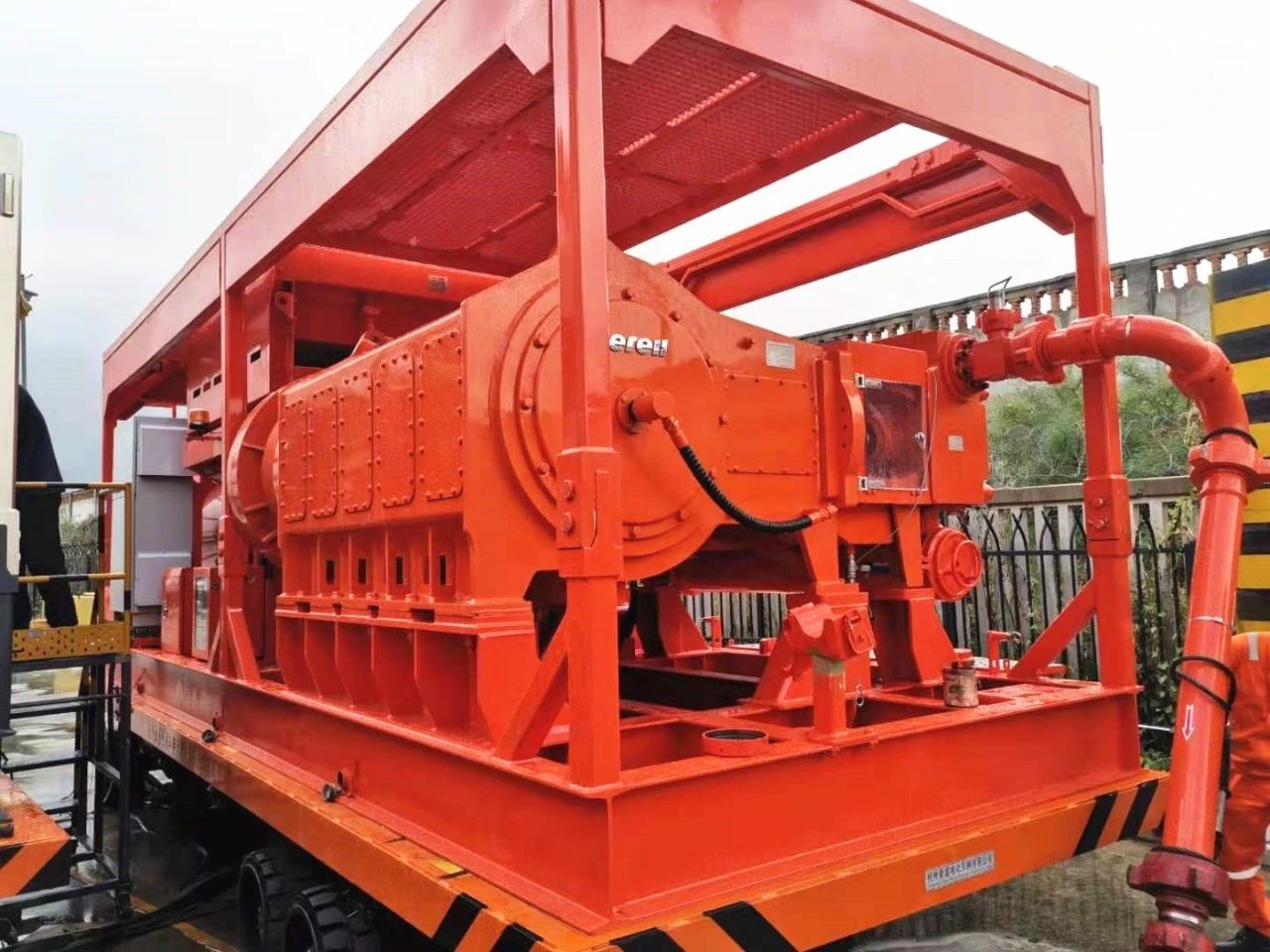
Figure 4: In October 2019, the world's first 7000hp electric frac pumper independently developed and manufactured by Jereh Group was successfully offline
It’s not just a change of the power engine mode, but a set of customized solution for domestic shale gas development. It includes a complete set of electric frac equipment, power supply solution, intelligent control solution and business operation mode, so that there would be no power supply concerns during application.
The solution also sets many records, such as the world's first 7000hp electric frac equipment, equipped with the world's most powerful plunger pump, the electric hydration skid with the industry's largest displacement, the world's first intelligent continuous sand conveying equipment, etc. This set of solutions can fully adapt to domestic frac operation conditions of high pressure, large displacement and long-time continuous operation.
The journey of independent R&D is full of difficulties and obstacles, and it took 8 years to complete this splendid ride.
However, perhaps only with this accumulation and development can shale oil and gas development go faster, as it dares to face up to the real problems and to do its utmost to solve them.
Cost reduction is a protracted war
Thanks to technology innovators like Jereh Group, China's shale industry has been steadily advancing despite all the difficulties. In 2019, China's production of tight gas and shale gas hit a record high, reaching 40 billion cubic meters and 15 billion cubic meters respectively, where the shale gas production increased by 38.9%.
In addition to Sichuan Basin, many oil and gas producing areas in China, including Changqing Oilfield, Xinjiang Oilfield, Daqing Oilfield, Dagang Oilfield, etc., began shale oil and gas development.
In 2020, Jereh Group 10,000hp electric frac trailor and 5000hp electric frac skid participated in key shale oil projects in China, helping to create the "China Speed" of maximum fracking 11 sections a day in Bohai Bay.
The shale oil field of Dagang Oilfield is planned to achieve an annual output of 500,000 tons of shale oil by 2025, becoming another important battlefield for China's shale oil and gas revolution.
Looking ahead, the oil and gas industry obviously needs more innovators and innovations just like Jereh Group and its electric frac solution.
In the long run, the Game between large oil and gas producing countries, geopolitical disputes, and the uncertainty of the world economic outlook all may lead to another sharp rise or fall of oil prices.
In 2019, the import of China's oil and gas reached a new high, with oil dependence reaching 70.8% and natural gas dependence of 43%. The high volume of oil and gas import highlights the domestic energy security issues.
No matter in the past, at present or in the future, challenges, risks and market fluctuations have never been far away from the oil and gas industry. In recent years, the frequent rise and fall of oil price has brought greater warning to the domestic oil and gas industry: the development of the industry cannot be entirely dependent on oil price. The long-term way to move forward is to respond to all changes with constancy, that is continuous technology innovation.
Jereh Group’s electric frac solution adheres to this ideology. Through continuous and in-depth investment in the technical field, it finally helps the domestic shale gas development embark on the path of independence.
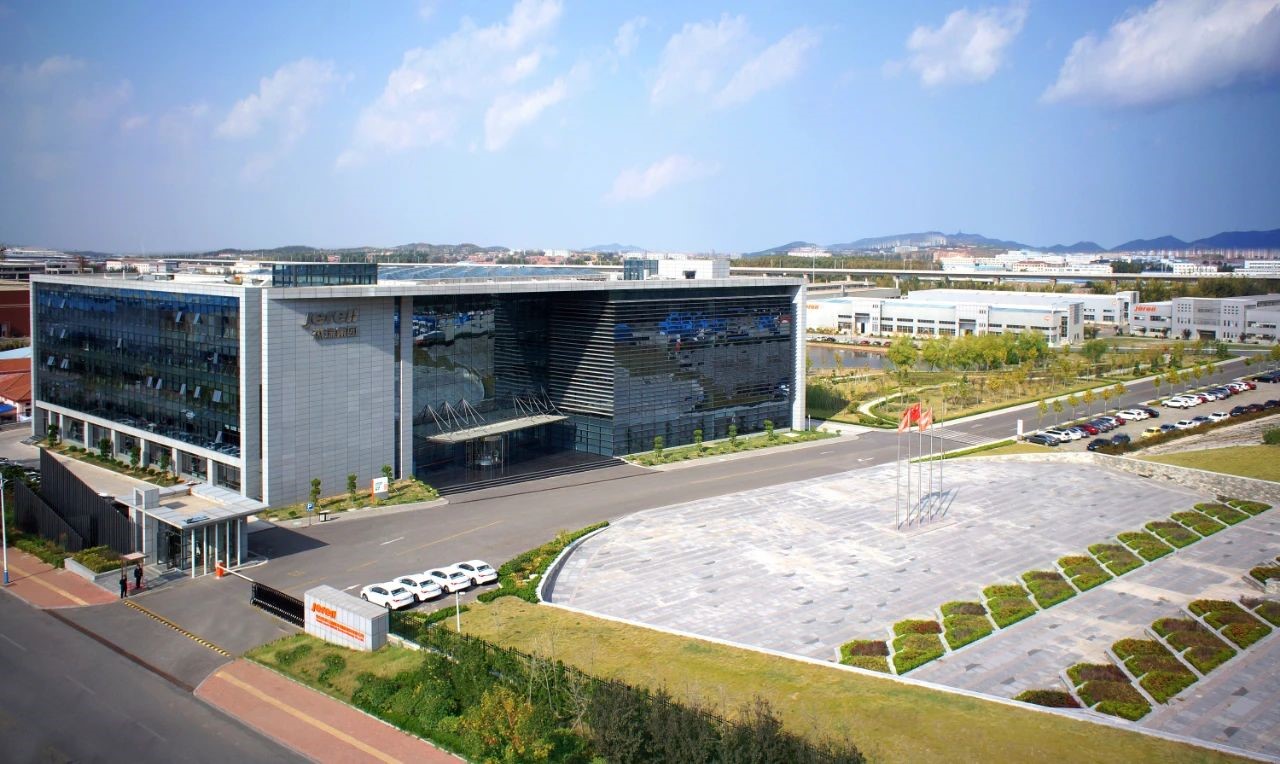
Figure 5: Jereh Group's Headquarters in Yantai, Shandong.
It's hard to predict the future oil price, but technology progress will surely make the cost lower; even sometimes technological research and development process may take longer to reach perfect, it will eventually take us further.










